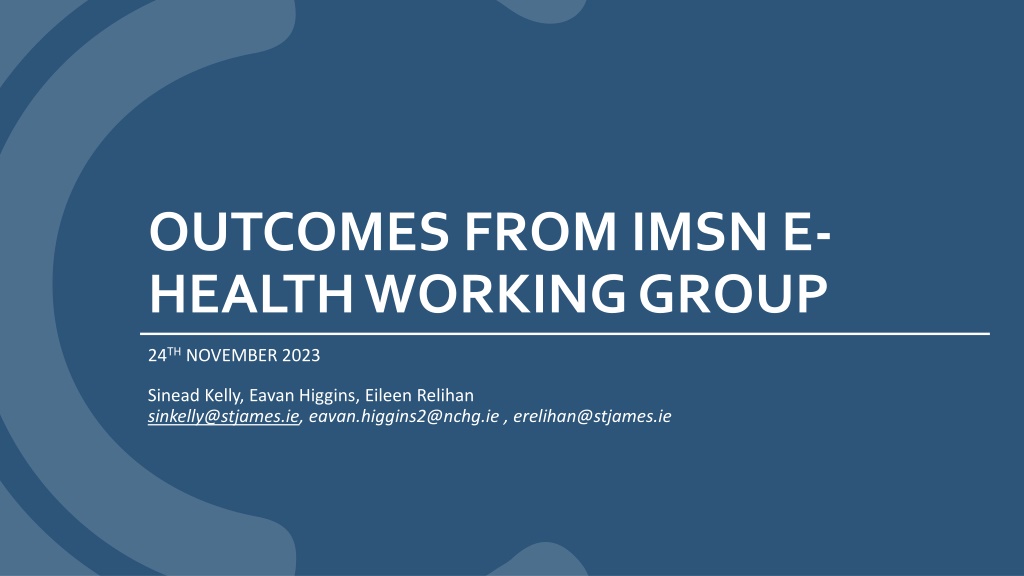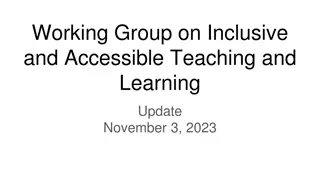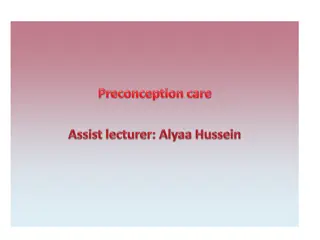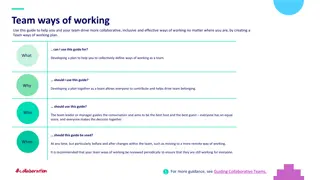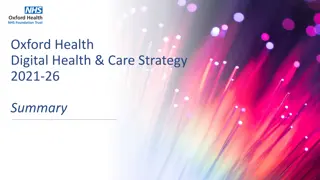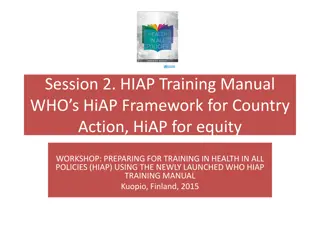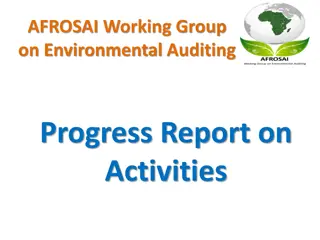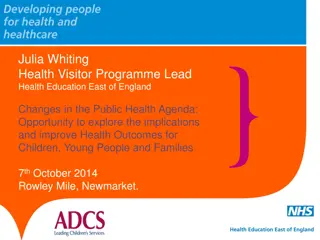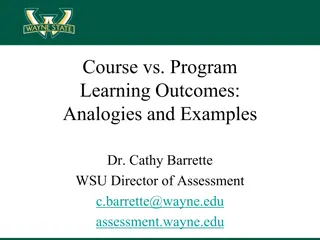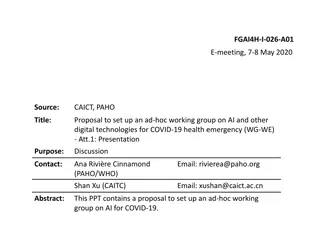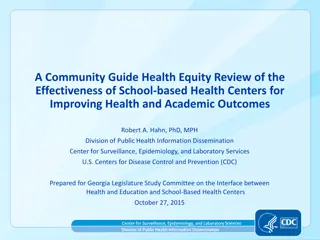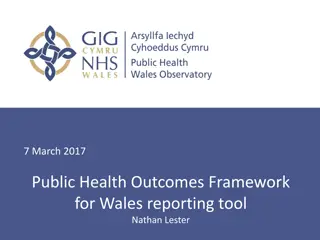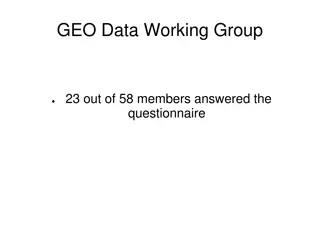E-Health Working Group Outcomes and Objectives
The IMSN E-Health Working Group focuses on developing taxonomy for technology-associated errors, collaborating for safe medication use on EHRs, integrating best practices, influencing national standards, sharing safety incidents, and encouraging multidisciplinary collaboration to enhance medication safety.
Download Presentation

Please find below an Image/Link to download the presentation.
The content on the website is provided AS IS for your information and personal use only. It may not be sold, licensed, or shared on other websites without obtaining consent from the author.If you encounter any issues during the download, it is possible that the publisher has removed the file from their server.
You are allowed to download the files provided on this website for personal or commercial use, subject to the condition that they are used lawfully. All files are the property of their respective owners.
The content on the website is provided AS IS for your information and personal use only. It may not be sold, licensed, or shared on other websites without obtaining consent from the author.
E N D
Presentation Transcript
OUTCOMES FROM IMSN E- HEALTH WORKING GROUP 24THNOVEMBER 2023 Sinead Kelly, Eavan Higgins, Eileen Relihan sinkelly@stjames.ie, eavan.higgins2@nchg.ie , erelihan@stjames.ie
OVERVIEW About us Aims & Objectives Delivering Objectives Focus on Development of Taxonomy for Classification of Technology-Associated Errors 2
ABOUT US IMSN Working Group MEMBERSHIP Outputs will be documented and reported to the IMSN Pharmacy-based specialists with an expressed interest in medication safety Individual members responsible for feedback to their local medication safety group and informatics Actively working within those areas Digital health solutions implemented or Meetings every 2 months Rotating chair planned GOVERNANCE
AIM To collaborate and share best practice to support safe medication use processes on EHRs with multidisciplinary collaboration to assess risk, improve quality and eliminate medication-related avoidable harm.
OBJECTIVES Integration of international best practices to eliminate technology-related avoidable harm from medication safety incidents Proactively assess international standards related to eHealth and medication safety to make our solutions as safe as possible and minimise error potential Influence the development of national standards and regulations Share significant technology-related medication safety incidents Share design, build and implementation medication safety experiences Encourage multi-disciplinary, cross project and cross organisation collaboration
DELIVERING OBJECTIVES Proactive assessment & integration of international best practices Influence development of national standards Sharing technology related safety incidents Standing agenda item Focus on technology related medication safety incidents Working group will identify key operational objectives Standing agenda item Maintain patient and staff anonymity Present recent international, national or local safety alerts pertaining to technology and medication safety Representation on national committees will facilitate bidirectional communication Facilities sharing of incidents, strategies for prevention/risk reduction and lessons learned Identify gaps and potential improvements Facilitate open discussion
FOCUS ON DEVELOPMENT OF TAXONOMY FOR TECHNOLOGY RELATED MEDICATION SAFETY INCIDENTS Issue Identified gap in the capture of medication safety incidents related to technology No standard classification in use nationally in Ireland Different approaches across organisations Impact Hinders ability to identify, report and share similar incidents within and across organisations Actions Undertake a literature review on the taxonomies already available internationally Identify a suitable taxonomy for trial by working group members Iterative approach to refinement of taxonomy Output Agreement on a taxonomy suitable for use across all organisations Development of a position paper on reporting and classification of these incidents
Developing a Taxonomy: Aims Describe data qualitatively & qualitatively Monitor the trends in contributory factors as the system matures Increase knowledge and expertise in area which is continually evolving Develop a framework to enable sharing of learning with other organisations
Taxonomies for Medication Errors Contributory Factors EPR-related Other Medication Errors Error Type taxonomy Patient Outcomes Risks Patient Impact taxonomy Risk-Rating taxonomy
DEFINE THE FOCUS FOR THE TAXONOMY Healthcare Technology- Related Errors EHR/EPR-Related Medication -Related
DEVELOPMENT OF THE TAXONOMY Literature Review No official taxonomy or single taxonomy widely in use None of the available taxonomies were suited to real-world application Inclusions Errors that were unique to IT Errors that existed with paper records but were made more likely with IT Errors that had always occurred but were more likely to cause harm with IT Exclusions Errors that were no different with use of IT or paper records Ref: Australian Commission on Quality and Safety in Healthcare. March 2017.
Developing the Taxonomy Data retrieval issue Decision support Default settings/content Discharge process design Display/presentation of information Human-system interface Hybrid systems without interoperability Mismatch between mental model/expectations and system functionality Remote prescribing Scheduling issue Selection error Technical failure User access
EPR-Related Contributory Factors to Medication Errors Reported Oct 2018 Aug 2023 (n=230) EPR go-live 59 60 55 50 41 40 27 30 26 22 20 Insulin go-live ICU transition 10 0 2018 (2 months) 2019 2020 2021 2022 2023 Hybrid systems Display/presentation of info User access Scheduling issue Default settings/content Discharge process Human-system interface Data retrieval issue Selection error Technical failure Decision support Total
EPR-Related Contributory Factors to Medication Errors Reported Oct 2018 Aug 2023 (n=230) 103 100 80 60 40 29 26 21 19 20 13 6 5 3 3 2 0 2023 2022 2021 2020 2019 2018 Total
Application of the Taxonomy: Operational Issues What We Learnt Need to consolidate categories: reduce from 13 to 11 The profile of contributory factors is dynamic due to continual customisation /enhancement Vendor build- related User-related Application is very subjective Prominence of contributory factors is extremely biased by current Site build- related projects/focus in the hospital Some contributory factors are much more visible than others An additional level of stratification would be useful Future Plan Sustainability: integrate taxonomy into medication safety reporting system Transferability: trial the taxonomy in other care settings, systems and sites Flexibility: expect design process to be iterative
Application of the Taxonomy: Data What We Learnt Factors affect a very small proportion of reported events (228 of 3837) The taxonomy facilitates identification, understanding and monitoring of contributory factors Enables tracking of the impact of local customisation/enhancements on risk factors Demonstrates that maintaining a safe, effective EPR is continual, iterative process Has contributed to the knowledge base in an area with very limited published research Future Plan Taxonomy will increase visibility of risks at corporate and clinical level Will facilitate sharing of learning regarding risks and mitigation measures Will help inform design decisions and system optimisation Will provide evidence of system risk to build a case for modifications by vendor
